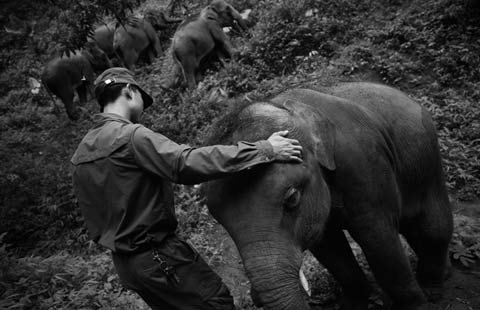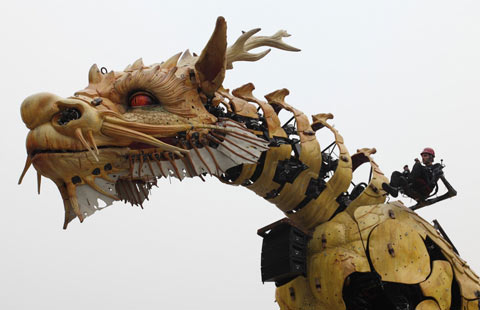Australian exports to China still face hurdles after trade deal
Updated: 2014-11-19 08:22
(Agencies)
|
|||||||||||
A trade deal signed between China and Australia has been touted as a major step towards Australia shifting its economy from a "mining boom" to a "dining boom," but the reality is likely to be more sobering.
Australia is looking to replace its reliance on exports of minerals such as coal and iron ore as mining investment wanes and demand begins to dwindle. The government would prefer to expand its food and agricultural exports to capitalise on a rapidly growing Asian middle class.
It has high hopes for the proposal for a free trade agreement (FTA) signed on Monday by Prime Minister Tony Abbott and Chinese President Xi, but the more likely winner from the deal is the services sector.
The deal is designed to open up Chinese markets to Australian farm exporters and the services sector, while easing curbs on Chinese investment in Australia. China is already Australia's top trading partner, with two-way trade of around A$150 billion ($130 billion) in 2013.
Several major agricultural foodstuffs, including sugar, rice and cotton, are currently excluded from the FTA, and Australia's frequent severe droughts impose a natural production ceiling on those sectors that are part of the pact.
Exclusions
HSBC chief economist Paul Bloxham said the deal would support Australia's "great rebalancing act", but others warned the agricultural sector is comparatively tiny.
Of Australia's total exports to China of A$94.7 billion in 2013, iron ore accounted for A$52.7 billion, according to the Department of Foreign Affairs and Trade. Wool, the top agricultural export, made up just A$1.9 billion.
Boosting agriculture also requires big investment in isolated, dry and volatile areas with limited water supply. Large swathes of eastern Australia are currently in drought.
Australian farms' return on capital has seldom topped 2 percent in a year on average during the past decade, excluding changes in land values, according to government research bureau ABARES. The unpredictability of earnings is greater than in the United States, Africa and Brazil.
Meanwhile, the sugar, rice, wheat and cotton sectors will have to wait three years for a review of their tariffs. Even then, any changes are likely to be contingent on Australia relaxing its existing requirement that all investment proposals by Chinese state-owned entities be scrutinised by the Foreign Investment Review Board.
Aging population
One sector where the road seems clearer is healthcare.
Chinese per capita health spending is growing the fastest in Asia, having quadrupled to $321 a year in 2012 from $80 in 2005, according to the World Bank.
China wants to shift to a community-based health system, as opposed to hospital-based, to cut costs and ensure universal access, leaving it with a shortage of providers in out-of-hospital health sectors like aged care and pharmacy.
An advanced aged care industry is "one of Australia's great comparative advantages", said Business Council of Australia CEO Jennifer Westacott.
Peter Hope, who runs a pharmacy in the small Australian state of Tasmania, said the new rules would allow him to quickly expand beyond his already planned Beijing store in April next year to 1,000 franchises around China.
Related news
Trade deal to singe domestic coal firms
Related Stories
Trade deal to singe domestic coal firms 2014-11-18 09:26
Deal set to boost food cooperation 2014-11-18 08:07
China, Australia concludes FTA negotiations 2014-11-17 09:33
Today's Top News
Deal set to boost food cooperation
Russia in upgraded war of words with NATO
Recovery MH17 wreckage to be completed in five days
Suspicious package prompts partial evacuation of British parliament
V4 countries decide to offer Ukraine help
Oil reserves to be published regularly
China stocks rise with Shanghai-HK stock connect launch
Chinese weapons winning battle for int'l market
Hot Topics
Lunar probe , China growth forecasts, Emission rules get tougher, China seen through 'colored lens', International board,
Editor's Picks

|

|

|

|

|

|





